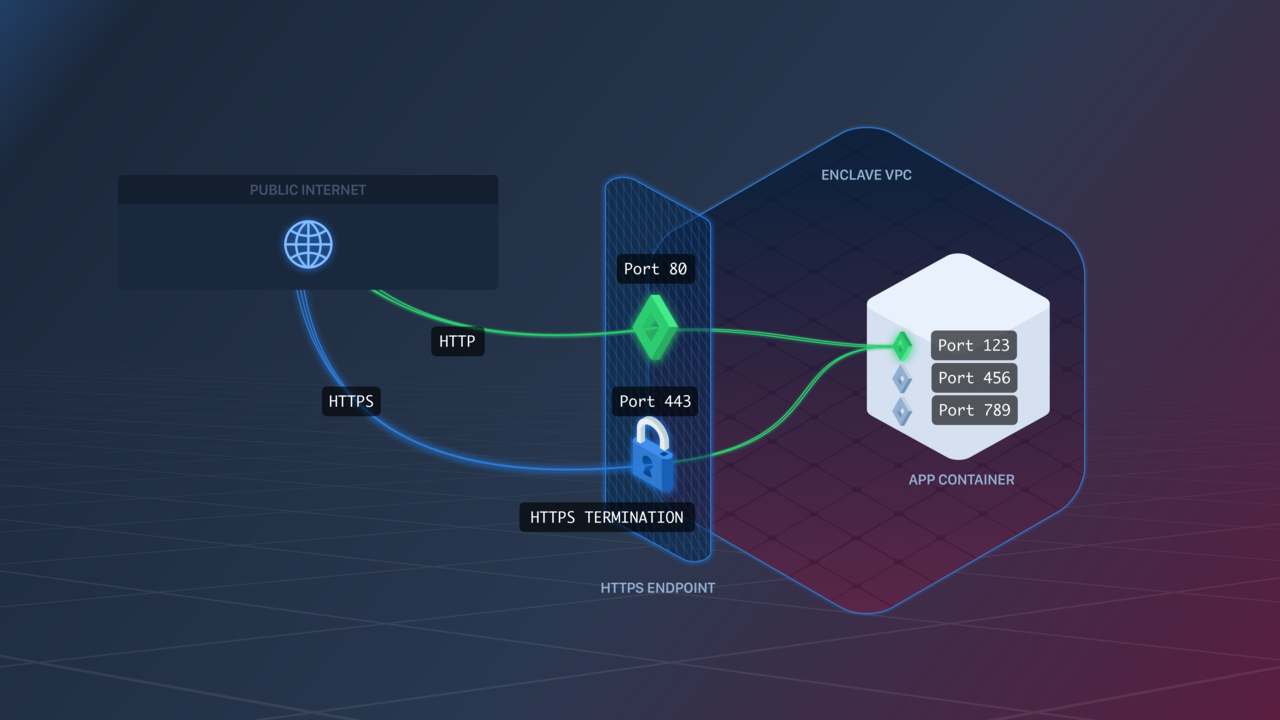
- Using the
aptible endpoints:https:createcommand, - Using the Aptible Dashboard by:
- Select the App you want to create an endpoint for
- In the Endpoints tab, select New Endpoint
- Customize the endpoint settings as needed:
- Choose which Service you want this endpoint associated with, if applicable
- Specify a custom container port, if needed
- Choose the Endpoint Type
- Choose the Endpoint Placement
- Enable IP Filtering, if necessary
- Set a Token Header, if necessary
- Choose between the Round Robin (default), Least Outstanding Requests, and Weighted Random load balancing algorithms for request routing.
aptible endpoints:https:modify command.
Traffic
HTTP(S) Endpoints are ideal for web apps. They handle HTTPS termination, and pass it on as HTTP traffic to your app Containers. HTTP(S) Endpoints can also optionally redirect HTTP traffic to HTTPS by settingFORCE_SSL=true in your app configuration.
HTTP(S) Endpoints also allow you to specify how you’d like requests to be routed among containers through the Round Robin, Least Outstanding Requests, and Weighted Random load balancing algorithms.
- Round Robin: The default routing algorithm. Requests are routed evenly to each container sequentially.
- Least Outstanding Requests: Requests are routed to the container with the lowest number of in-process requests.
- Weighted Random: Requests are routed evenly to each container, but in a random order.
HTTP(S) Endpoints can receive client connections from HTTP/1 and HTTP/2, but it is forced down to HTTP/1 through our proxy before it reaches the app.
Container Port
When creating an HTTP Endpoint, you can specify the container port where traffic should be sent. Different Endpoints can use different ports, even if they’re associated with the same Service. If you don’t specify a port, Aptible will pick a default port for you. The default port Aptible picks is the lexicographically lowest port exposed by your Image. For example, if your Dockerfile containsEXPOSE 80 443, then the default port would be 443.
It’s important to make sure your app is listening on the port the Endpoint will route traffic to, or clients won’t be able to access your app.
Zero-Downtime Deployment
HTTP(S) Endpoints provide zero-downtime deployment: whenever you deploy or restart your App, Aptible will ensure that new containers are accepting traffic before terminating old containers. For more information on Aptible’s deployment process, see Releases.Keep reading:

